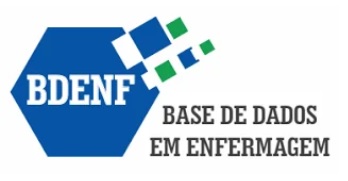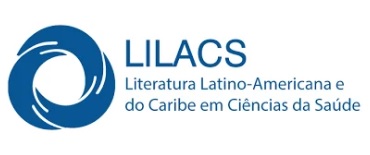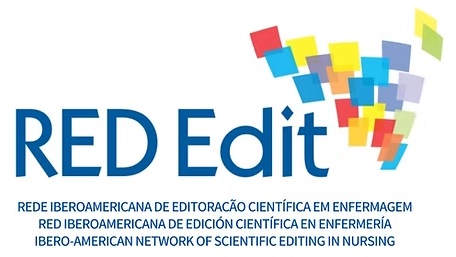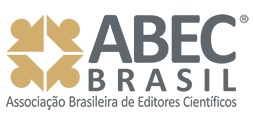Neonatal transfers from alongside birth center to a hospital setting
Keywords:
Newborn, Birthing Centers, Midwifery, PerinatologyAbstract
Introduction: Neonatal transfers from birth centers to hospital settings are an indirect indicator of the safety of this place for newborns of low-risk pregnant women. Objectives: To describe the characteristics of newborns from the Birth Center Casa de Maria to the General Hospital of Itaim Paulista and identify the reasons for these transfers. Method: A descriptive study was carried including of 72 newborns transferred form 2006 to 2007. Data were collected from medical records and a descriptive analysis was conducted. Results: 5.6% eliminated meconium intra-partum; one had an Apgar score <7 at 1st and at 5th minutes of life, 81.8% weighed between 2500 and 4000g; the transfer rate was 12.7% and the main reasons were jaundice (46%), newborn small or large for gestational age (11.5%) and problems related to breastfeeding (9.2%); 11.1% were admitted into the neonatal unit; there were no cases of neonatal death or severe sequelae. Conclusion: The main reasons for neonatal transfers are due to neonatal medical reasons frequent among newborns, do not represent an emergency situation and are not related to the care provided during delivery.
References
Organização Mundial da Saúde-OMS. Assistência ao parto normal: um guia prático. MS; Brasília: 2000. 53p.
Brasil. Ministério da Saúde. Portaria n. 985, 5 de agosto de 1999. Cria o Centro de Parto Normal-CPN, no âmbito do Sistema Único de Saúde. Brasília; 1999 [cited 2010 Sep 15]. Available from: http://dtr2001.saude.gov.br/sas/portarias/Port99/GM/GM-0985.html
Hodnett ED, Downe S, Edwards N, Walsh D. Home-like versus conventional institutional settings for birth. Cochrane Database Syst Rev [Internet]. 2005 [cited 2010 Sep 15];(1):CD000012. Available from: https://www.ncbi.nlm.nih.gov/pubmed/15674867
Sandall J, Hatem M, Devane D. Discussions of findings from a Cochrane review of midwife-led versus other models of care for childbearing women: continuity, normality and safety. Midwifery. 2009;25:8-13.
Koiffman MD, Schneck CA, Riesco MLG, Osava RH, Bonadio IC. Remoções neonatais da Casa do Parto de Sapopemba, São Paulo, 1998-2005. Rev Paul Enferm. 2006;25(4):227-34.
Koiffman MD, Schneck CA, Riesco MLG, Bonadio IC. Risk factors for neonatal transfers from the Sapopemba free-standing birth centre to a hospital in São Paulo, Brazil. Midwifery [Internet]. 2010 [cited 2010 Sep 15];26(6):e37-43. Available from: https://www.ncbi.nlm.nih.gov/pubmed/19327877
Rooks JP, Weatherby NL, Ernst EKM. The national birth center study. Part III - Intrapartum and immediate postpartum and neonatal complications and transfers, postpartum and neonatal care, outcomes and client satisfaction. J Nurse Midwifery [Internet]. 1992 [cited 2010 Sep 15];37:361-97. Available from: https://www.sciencedirect.com/science/article/abs/pii/009121829290122J
Fernandes BM. Casa de parto: experiências e vivências orientam um novo pensar em saúde. Juiz de Fora: Editora UFJF; 2006.
Campos SEV, Lana FCF. Resultados da assistência ao parto no Centro de Parto Normal Dr. David Capistrano da Costa Filho em Belo Horizonte, Minas Gerais, Brasil. Cad Saúde Pública [Internet]. 2007 [cited 2010 Sep 15];23(6):1349-59. Available from: http://dx.doi.org/10.1590/S0102-311X2007000600010
Boulton M, Chapple J, Saunders D. Evaluation a new service: clinical outcomes and women’s assessment of the Edgware Birth Centre. In: Kirkham M, editor. Birth centres: a social model for maternity care. London: Elsevier Science; 2003. p.115-29.
Riesco MLG, Oliveira SMJV, Bonadio IC, Schneck CA, Silva FMB, Diniz CSG, Lobo SF, Saito E. Centros de parto no Brasil: revisão da produção científica. Rev Esc Enferm USP [Internet]. 2009 [cited 2010 Sep 15]; 43(spe2):1297-302. Available from: http://dx.doi.org/10.1590/S0080-62342009000600026
Wax JR, Pinette MG, Cartin A, Blackstone J. Maternal and newborn morbidity by birth facility among selected United States 2006 low-risk births. Am J Obstet Gynecol [Internet]. 2010 [cited 2010 Sep 15];202(2):152.e1-5. Available fr5om: https://www.ncbi.nlm.nih.gov/pubmed/20004882
Lobo SF. Caracterização da assistência ao parto e nascimento em um centro de parto normal do município de São Paulo [dissertação]. São Paulo: Universidade de São Paulo-Escola de Enfermagem; 2009.
Enkin M, Keirse, MJNC, Neilson J, Crowther C, Duley L, Hodnett E, et al. Guia para atenção efetiva na gravidez e no parto. 3ª ed. Rio de Janeiro: Guanabara Koogan; 2005. 279p.
Kenner C. Enfermagem neonatal. [tradução e revisão técnica de M. I. Carmagnani, C. C. Marra, M. J. Avena] 2ª ed. Rio de Janeiro: Reichmann & Affonso; 2001. 375p.
Fahy K, Colyvas K. Safety of the Stockholm Birth Center study: a critical review. Birth [Internet]. 2005 [cited 2010 Sep 15];32(2):145-50. Available from: https://www.ncbi.nlm.nih.gov/pubmed/15918872
Davis-Floyd RE, Barclay L, Daviss B, Tritten J. Birth models that work. Berkeley: University of California Press; 2009. 496p.
Downloads
Published
How to Cite
Issue
Section
License
Copyright (c) 2024 Revista Paulista de Enfermagem

This work is licensed under a Creative Commons Attribution 4.0 International License.
Propriedade intelectual
Todo o conteúdo da REPEn, exceto onde está identificado, está licenciado sob uma Licença Creative Commons do tipo atribuição CC-BY (https://creativecommons.org/licenses/by/4.0/deed.pt_BR).










